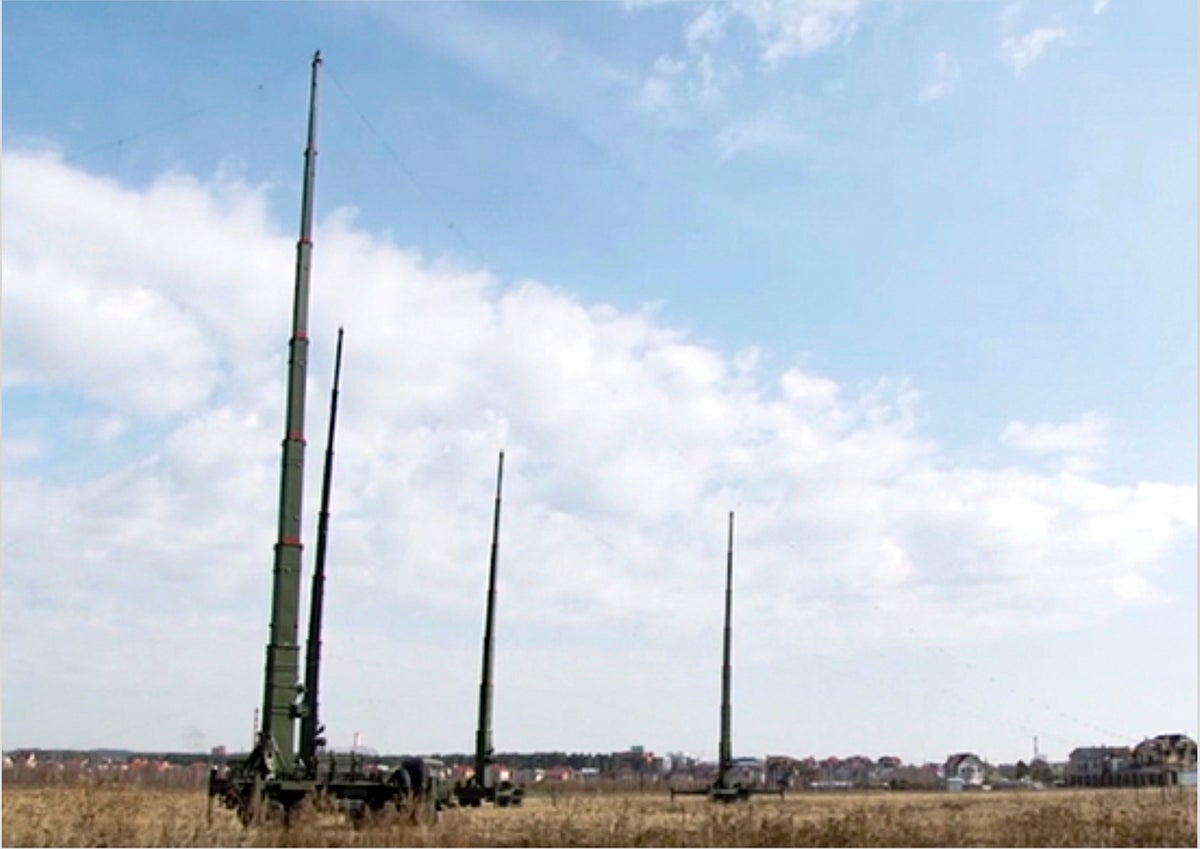
On Ukraine’s battlefields, the simple act of powering up a cellphone can beckon a rain of deathly skyfall. Artillery radar and remote controls for unmanned aerial vehicles may also invite fiery shrapnel showers.
This is electronic warfare, a critical but largely invisible aspect of Russia’s war against Ukraine. Military commanders largely shun discussing it, fearing they’ll jeopardize operations by revealing secrets.
Electronic warfare technology targets communications, navigation and guidance systems to locate, blind and deceive the enemy — and direct lethal blows. It is used against artillery, fighter jets, cruise missiles, drones and more. Militaries also use it to protect their forces.
It’s an area where Russia was thought to have a clear advantage going into the war. Yet, for reasons not entirely clear, its much-touted electronic warfare prowess was barely seen in the war’s early stages in the chaotic failure to seize Ukraine's capital, Kyiv.
It has become far more of a factor in the current fierce fighting in eastern Ukraine, where shorter, easier-to-defend supply lines let Russia move electronic warfare gear closer to the battlefield.
A Ukrainian intelligence official called the Russian threat “pretty severe” when it comes to disrupting reconnaissance efforts and commanders’ communications with troops. Russian jamming of GPS receivers on drones that Ukraine uses to locate the enemy and direct artillery fire is particularly intense “on the line of contact,” he said.
Ukraine has had some success countering Russia’s electronic onslaught. It has captured important hardware — a significant intelligence coup — and destroyed at least two multi-vehicle mobile electronic warfare units.
Ukraine's own electronic warfare capability is hard to assess. Analysts say it has markedly improved since Russia seized Crimea and instigated a separatist revolt in eastern Ukraine in 2014. Ukraine has also made effective use of technology and intelligence from the United States and other NATO members, helping it sink the battle cruiser Moskva. Allied satellites and surveillance aircraft help from nearby skies, as does Elon Musk’s Starlink satellite communications network.
Electronic war has three basic elements: probe, attack and protect. First, intelligence is gathered by locating enemy electronic signals. On attack, “white noise” jamming disables and degrades enemy systems, including radio and cellphone communications, air defense and artillery radars. Then there is spoofing, which confuses and deceives. When it works, munitions miss their targets.
“Operating on a modern battlefield without data is really hard,” said retired Col. Laurie Buckhout, a former U.S. Army electronic warfare chief. Jamming “can blind and deafen an aircraft very quickly and very dangerously, especially if you lose GPS and radar and you’re a jet flying at 600 miles an hour.”
All of which explains the secrecy around electronic warfare.
“It is an incredibly classified field because it is highly dependent on evolving, bleeding-edge technologies where gains can be copied and erased very quickly,” said James Stidham, a communications security expert who has consulted for the U.S. State and Homeland Security departments.
Ukraine learned hard lessons about electronic warfare in 2014 and 2015, when Russia overwhelmed its forces with it. The Russians knocked drones out of the sky and disabled warheads, penetrated cellphone networks for psychological ops and zeroed in on Ukrainian armor.
One Ukrainian officer told Christian Brose, an aide to the late U.S. Sen. John McCain, R-Ariz., how Russian info warriors tricked a commander into returning a wireless call from his mother. When he did, they geolocated him in mid-call and killed him with precision rockets, Brose wrote in the book “The Kill Chain.”
In the current war, electronic warfare has become a furious theater of contention.
Russia has engaged in GPS jamming in areas from Finland to the Black Sea. A regional Finnish carrier had to cancel flights on one route for a week as a result. Russian jamming has also disrupted Ukrainian TV broadcasting, said Frank Backes, an executive with California-based Kratos Defense, which has satellite ground stations in the region.
Yet in the war’s early days, Russia’s use of electronic warfare was less effective and extensive than anticipated. That may have contributed to its failure to destroy enough radar and anti-aircraft units to gain air superiority. Some analysts believe Russian commanders held back units fearing the units would be captured. At least two were seized.
Russian commanders may have also limited the use of electronic warfare early in the conflict out of concern ill-trained or poorly motivated technicians might operate it poorly.
“What we’re learning now is that the Russians eventually turned it off because it was interfering with their own communications so much,” said retired Lt. Gen. Ben Hodges, a former U.S. Army commander for Europe. The problems were evident with many Russian troops talking on insecure open radio channels, easily monitored by outsiders.
Russia’s Defense Ministry did not respond to questions for this article.
It’s unclear how much of an edge its electronic assets may now offer. Ukraine’s forces are now more concentrated, which could make them easier to target.
Much depends on whether Russia’s battalion tactical groups “are configured in reality as they are on paper,” said James Rands, of the Jane’s military intelligence think tank. Each group is supposed to have an electronic warfare unit. The Pentagon says 110 groups are in Ukraine.
The Kremlin also claims to have more than 1,000 small, versatile Orlan-10 unmanned aerial vehicles it uses for reconnaissance, targeting, jamming and cellphone interception.
The U.S. and Britain are providing jamming gear. How much it helps is unclear. Neither country has offered details.
Musk's Starlink is a proven asset. Its more than 2,200 low-orbiting satellites provide broadband internet to more than 150,000 Ukrainian ground stations. Severing those connections is a challenge for Russia. It is far more difficult to jam low-earth orbiting satellites than geostationary ones.
Musk has won plaudits for at least temporarily defeating Russian jamming of those ground stations with a quick software fix. But he has warned Ukrainians to power them down when possible — they are vulnerable to geolocation — and worried on Twitter about redoubled Russian interference efforts.







